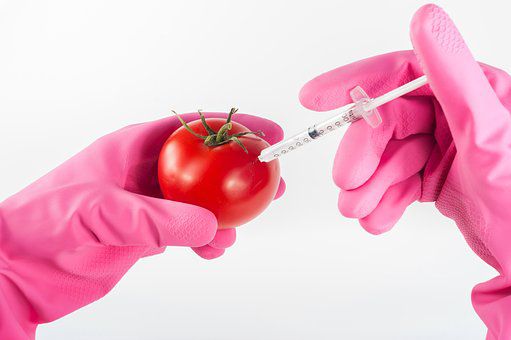MSG – GLUTAMATES FLAVOUR ENHANCERS
 Glutamic Acid is one of the most abundant naturally occurring non-essential amino acids found naturally in many fruit and vegetables.
Glutamic Acid is one of the most abundant naturally occurring non-essential amino acids found naturally in many fruit and vegetables.
MSG – Monosodium Glutamate is the chemically produced sodium salt of naturally occurring Glutamic Acid. It has the food additive code 621 and is extensively used in processed food & beverages as a flavour enhancer.
Symptoms can occur together such as, headaches, nausea, fatigue, dizziness, itching, hives, sweating, asthma, chest pains and more. Reactions can be immediate or delayed up to 12 hours depending on the person, their tolerance levels and how much has been consumed.
Below is a list of foods that contain Natural Glutamates:
- Tomatoes – fresh, tinned, bottled, paste, sauce etc
- Cheese
- Grapes – Raisins, Sultanas
- Wines, Port, Sherry, Liquor, Claret
- Mushrooms
- Peas
- Broccoli
- Onions
- Spinach
- Corn
- Whey Proteins
- Dried Yeast
- Vegetable Yeast and Meat Extracts (Marmite, Vegemite, Bovril, Fish & Meat Stock Cubes and Stock)
- Soy Sauce, Tamari, Miso, Tempeh
There are many artificial Glutamates that appear under different names and guises.
The additive code for ‘glutamates’ appear as numbers 620-625.
The following list of names ALWAYS contain MSG
|
Glutamates |
Glutamic Acid |
Gelatin |
|
Monosodium Glutamate |
Calcium Caseinate |
Textured Protein |
|
Monopotassium Glutamate |
Sodium Caseinate |
Yeast Nutrient |
|
Yeast Extract |
Yeast Food |
Autolyzed Yeast |
|
Hydrolyzed Protein Any protein that has been ‘hydrolyzed’ |
Hydrolyzed Corn Gluten |
Natrium Glutamate (Natrium is Latin for Sodium) |
MSG is often ‘hidden’ / not listed in the ingredients – often just listed as ‘Flavouring’.
Legally, if it is under a certain percentage, it doesn’t have to be listed.
- Processed Meats – pies, sausages, salami, frankfurts, saveloys, bacon
- Tinned meats – stew, meat & vegetables
- Tinned or Packet soups
- Gravy powder & stock cubes – Bisto, Gravox
- Savoury foods – crisps, crackers, rice crackers/cakes, biscuits
- Asian sauces – soy, oyster, fish
FURTHER INFORMATION FOR PARTICULARLY SENSITIVE MSG SUFFERERS
MSG sensitive people react to the free glutamic acid that occurs as a consequence of fermentation and/or manufacture.
The following OFTEN contain MSG or create MSG during processing that can cause reactions to HIGHLY SENSITIVE people.
Natural Flavouring
Wheat Protein
Citric Acid (Citrate)
Anything Flavouring
Whey Protein
Pectin
Seasonings
Soy Protein
Corn Syrup or corn starch
Stock
Soy Sauce or soy sauce extract
Modified food starch
Malt Extract /Maltodextrin
Pea Protein
Protease or Protease Enzymes
Barley Malt
Anything protein fortified
Enzymes anything
Dextrose
Reduced Fat Milk – skim milk
Anything fermented
Rice Syrup, brown rice syrup
Most things low or no fat
Anything Enriched or Vitamin Enriched
Aspartame sweetener -(Aspartic acid /Aspartate)
Anything Ultra-Pasteurized
SLOW COOKER / CROCK POT cooking also gives those who are highly sensitive an MSG-like reaction. The extended cooking time tends to break down protein into individual amino acids.
TRISODIUM PHOSPHATE is a common food additive (and alkaline detergent) found in highly processed foods – https://www.healthline.com/nutrition/trisodium-phosphate#why-is-it-added? . It is also used in low concentrations as a bacterial sterilizer /dip on fresh meat, poultry and fish. It’s also often added to meat and seafood products like bacon, sausage, lunch meat and canned tuna to help retain moisture, increase shelf life and prevent spoilage.
ASPARTAME works on the body in the same manner as processed free glutamic acid (MSG). The sweetener NEOTAME is a reformulated aspartame and should also be avoided.